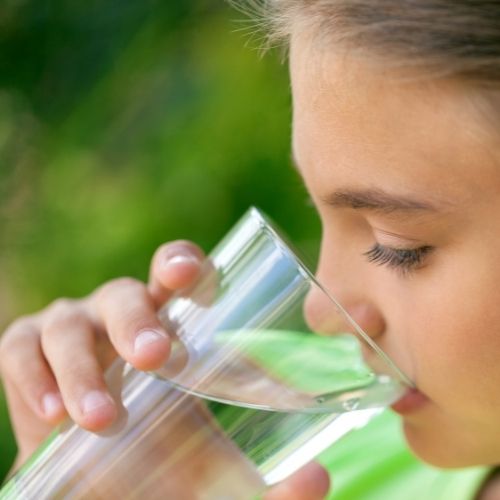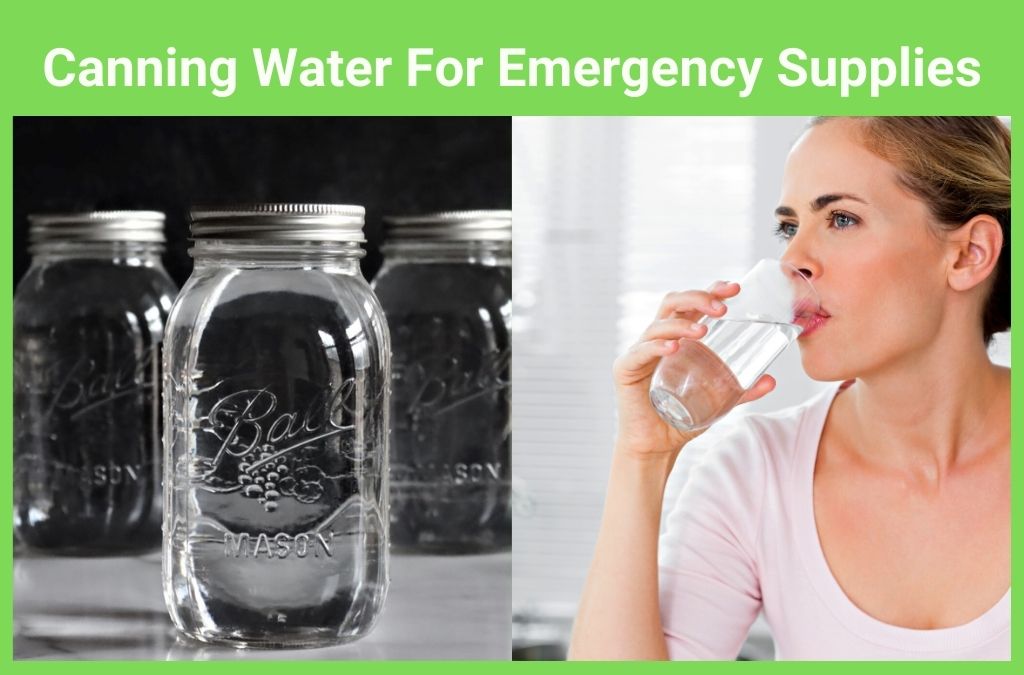Emergencies can be devastating and disorienting, preparing for them requires skills and expertise. Water is one of the essential items to store in preparation for any emergency, and one of the safest ways to do this long-term is by canning water.
No one will dispute the importance of fresh drinking water to human survival. In fact, there are several ways to store freshwater for up to a year. However, did you know properly canned water can stay fresh on the shelf for decades? This is the only method that allows for safe, long-term water storage.
Our experts explain why canning water is important for emergency planning and also how to do it properly.
This may seem a bit of a reach for a home preserving equipment site, but without water, we won’t be needing tasty treats. So, let’s dive into why you can water, what is needed and how you do it!
Quick Content Navigation
Why Store Water?
As taught in every elementary school, water is an absolute necessity for human survival.
Most of us live in places where the supply of drinkable water is largely dependent on the power supply.
If you live in a large city, massive pumps are required to get the water from the dams to the population.
Unfortunately, there are lots of factors that can interrupt power in a city for a long period of time, or worse.
When power outages occur, often the ability to deliver water goes too. Natural disasters are a common cause of power loss.

The last decade has shown many natural disasters around the world and the damage they cause to a city.
Typhoons, mudslides, tsunami, severe snowstorms, and floods can knock down electric power towers or have people isolated in their homes.
Sometimes, this isolation can be for quite a long time, and without clean water, the situation can become perilous. Now you see why it is important to store clean fresh water in your home.
Why Canning For Water Storage?
Canning your water has a major advantage over other methods. Water canned in jars can last for as long as ten years or more and not get contaminated.
Canning is strongly recommended over other methods when storing for a long period of time. It helps to maintain the fundamental features of water and keeps it odorless, colorless, and tasteless.

Storing in plastic bottles and containers is the preferred modern method for water storage.
However, it is only safe for about a year before the plastic starts to break down and leach into the water.
There have been many research experiments done using various methods of storing water. Each of these has concluded that canning water in glass jars is the best way to keep drinkable water over a long period of time.
You must first ensure that the water and the jar are sterilized by boiling, then simply process them in a water bath canner.
An easy way to do this is to “top-up” a half batch of anything you are preserving with a few bottles of canned water. This will save you time and make the process very efficient.
Besides, why choose plastic containers to increase landfill over glass jars that you can recycle and reuse many times?
However, you should not mistake canning water for simply storing it in jars. These are two very different processes, as we explain below.
The Difference Between Canning Water And Storing Water In Jars
It is a basic scientific fact that untreated water spoils after a few months. You will see green moss and maybe mold growing, and there will be a funny taste to it.
Storing water in jars basically means filling jars with some fresh water and then storing them. It will only stay fresh for some months before it gets contaminated. Freshwater contains bacteria and other microorganisms plus mold and other fungal spores.
Canning water requires boiling the water to kill these, sterilizing the jars, and then pressure canning or water bath canning.
Method Of Canning Water
Once you have boiled the water, you can use either the water bath canning or pressure canning methods. Please note that you must not add anything to the water. No sugar or electrolytes as these will cause the water to spoil. Plain water only!!!
Most people have a large stockpot in their kitchen cupboards, so a water bath will likely be the most popular. It is perfectly safe and very easy to do.
However, keep in mind that if you do own a home pressure canner, the process is very quick and also very easy.
Here are the steps to follow.
Phase I: Jar Preparation
Step 1. This is the foundation of every successful water canning process. You need to wash your jars with hot soapy water or run them through your dishwasher if you have one. Make sure they are sparkling clean.
To sterilize your jars, you can submerge them in boiling water for about 10 minutes.
However, this is not necessary according to the National Centre for Food Preservation. It states that as long as the jars are processed for longer than 10 minutes, sterilizing jars occurs in the process of canning.
This is true for either water bath or pressure canning.
Step 2. After washing the jars, you should pre-warm them to help make them shockproof while being filled with hot water. Arrange the jars on a towel to keep them moving while filling.
Phase II: Add The Canning Water Jars To The Canner

This is a little complicated as there are several different instructions on how to do the water bath canning. Some instructions say that good canning in the boiling water bath canner takes up to 20 minutes while others argue that just 10 minutes is enough.
Either way, boiling water for longer does not degrade the quality of the water. Better to be safe than sorry!
Step 1. Set the temperature of your canner to about 180 degrees F.
Step 2. With a clean pot, heat some clean water for 5 extra minutes at full rolling boiling point.
Step 3. Fill the clean jars with the boiled water leaving space of about half an inch between water level and brim. Seal the filled jars with two-part canning lids to finger tight.
Step 4. Use a jar lifter to place the hot jars carefully onto the rack in the canner. For water bath canning, let it reach a full rolling boil for 10 to 20 minutes. Pressure canning is the same. Allow the pressure and temperature to build and then process for 10-20 minutes.
Step 5. Allow the jars to cool and store them in a cool and dark place for as long as you want.
Conclusion
Canned water can last for decades if processed properly. Canning water means the process of sterilizing fresh water and storing it in glass jars. It is not only the processing of water that allows for long-term storage, it is the vessel it is stored in.
Even sterilized water that is stored in plastic bottles or containers will be unsafe for consumption within a year. This is because the plastic starts to break down and leach into the water. The only way to safely store freshwater for long periods of time is by using food preserving methods for canning water.
The amount of water you should keep for emergencies will depend on your water needs. As recommended by the Federal Emergency Management Agency (FEMA), an average person needs at least 1 gallon of water a day.
For more preserving expert tips, check out our posts about Expert Guide To Vacuum Sealing Mason Jars and Expert Tips To Use Food Vacuum Sealers At Home.


 Hi! I’m Sally-Anne!
Hi! I’m Sally-Anne!